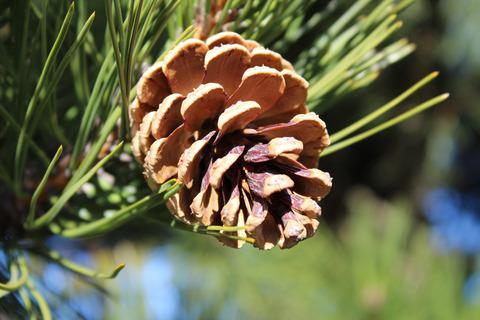Our official English website, www.x-mol.net, welcomes your
feedback! (Note: you will need to create a separate account there.)
Limited evidence for a consistent seed mass‐dispersal trade‐off in wind‐dispersed pines
Journal of Ecology ( IF 5.3 ) Pub Date : 2020-07-27 , DOI: 10.1111/1365-2745.13477 Sarah V. Wyse 1 , Philip E. Hulme 1
中文翻译:

在风散松中一致的种子质量散布权衡的证据有限
更新日期:2020-07-27
Journal of Ecology ( IF 5.3 ) Pub Date : 2020-07-27 , DOI: 10.1111/1365-2745.13477 Sarah V. Wyse 1 , Philip E. Hulme 1
Affiliation

|
- Much of the variation in dispersal potential among seeds of different plant species has been related to a putative trade‐off between dispersal potential and seed mass. Yet to date there are few taxonomically controlled comparisons that explore the generality of this relationship across and within multiple species.
- We measured the seed mass and dispersal traits across multiple pine species that encompassed a 100‐fold range in seed mass. We expected that for the larger seeded species, the resource investment required in the cone to house seeds and their wings may constrain dispersal potential. We examined the relative roles of samara and cone traits in determining the terminal velocity, and investigated how the relative investment of resources in cone structure related to seed mass and samara dispersal traits. Finally, we examined the partitioning of variation in seed mass and terminal velocity within and among individuals of each species.
- We found a strong positive relationship between seed mass and samara terminal velocity across all 12 species; however, this seed mass‐dispersal trade‐off was only significant within two of our species. For most species, wing loading was the most important trait determining samara terminal velocity. Across species, increases in cone investment were associated with heavier seeds with longer wings but higher terminal velocities, while within‐species increases in cone investment were associated with decreases in terminal velocity. The majority of the variation in terminal velocity occurred within individual trees, while seed mass variation mostly occurred among trees and may therefore be subject to stronger selection pressure.
- Synthesis. We have found strong support for a trade‐off between seed mass and dispersal potential across a wide range of wind‐dispersed Pinus species. Importantly, we show that this trade‐off is largely absent within species, potentially reducing selective pressure. This may be largely due to the relationships between cone investment and samara traits, whereby increases in cone investment result in a proportionally greater increase in wing size than seed mass. Where resources are limited, investment in seed mass may be prioritized over dispersal.
中文翻译:

在风散松中一致的种子质量散布权衡的证据有限
- 不同植物物种的种子之间的散布势的大部分变化都与散布势和种子质量之间的假定折衷有关。迄今为止,几乎没有分类学上可控的比较来探讨这种关系在多个物种之间和内部的普遍性。
- 我们测量了多种松树种子的种子质量和散布性状,这些物种涵盖了种子质量的100倍。我们预计,对于较大的种子物种,在圆锥体中容纳种子及其翅膀所需的资源投资可能会限制分散潜力。我们研究了轮果和果穗性状在确定终极速度方面的相对作用,并研究了锥果结构中资源的相对投资如何与种子质量和轮果的散播性状相关。最后,我们研究了每个物种内以及个体之间种子质量和终极速度变化的分区。
- 我们发现在所有12个物种中,种子质量与翼果末端速度之间有很强的正相关;但是,这种种子的质量-分散权衡只有在我们两个物种中才有意义。对于大多数物种而言,机翼负荷是决定翼果末端速度的最重要特征。在整个物种中,锥状投资的增加与翅膀较长但末端速度较高的较重种子有关,而种内锥状投资的增加与末端速度的降低相关。终极速度的变化大部分发生在单个树木中,而种子质量变化主要发生在树木之间,因此可能会承受更大的选择压力。
- 综合。我们发现,在广泛分布于风中散布的松树种的种子质量和散布潜力之间进行折衷得到了强有力的支持。重要的是,我们表明物种之间基本上没有这种权衡,可能会降低选择压力。这可能主要是由于视锥果投资与翅果性状之间的关系所致,因此视锥果投资的增加会导致机翼尺寸的增长比种子质量成比例地更大。在资源有限的情况下,对种子质量的投资可能要优先于分散。











































 京公网安备 11010802027423号
京公网安备 11010802027423号